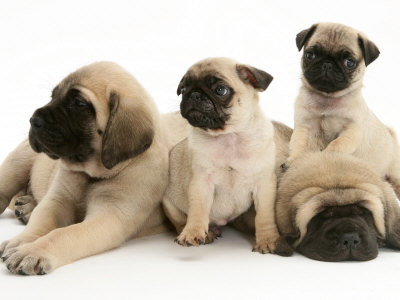Take him for a walk, and try to collect a stool sample before you leave for the vet's office. Are there enough vets and vet assistants, and do they seem professional and experienced? You can take him into the office when your turn comes around. Does the clinic specialize in many different veterinary medicine fields, or offer just basic veterinary services? Make sure you're comfortable with his vet. If it's a first time visit, your vet will likely need a stool sample, and it saves you the trouble of having to visit again with a fresh sample.
Take him out for short drives regularly, or you risk having him think that you're off for a vet visit every time he gets in the car. Keep these things in mind to have a pleasant vet visit. If he's small enough, put him in a crate, and carry him to the vet's office. If your dog still hasn't been socialized and is aggressive towards others, keep him in the car, and inform the staff that you've arrived for your appointment. While you can't change the unpleasant nature of your vet's job, you can try to make sure your dog has as pleasant an experience as is possible when he goes to the vet's office.
By taking frequent joy rides, your dog doesn't become anxious as soon as he gets into the car. Do they have a diagnostic lab on site, to collect and examine stool and blood samples?
Making the Vet a Dog's Best Friend
OK, it might be a bit much to expect a dog to become seriously fond of the the guy who prods him for no apparent reason, and inserts foreign objects into his genitalia. Do they offer emergency services? When looking around for a vet, check his clinic and waiting rooms. Lie your dog down, and examine his eyes, mouth, teeth, and paws. Help your new puppy socialize with other people.
Taking Your Pup to the Vet
If your puppy is still just a few weeks old, you have either taken him to a vet for his first physical, or are planing on doing so. Practice having him on a leash. Practice mock physical examinations in your home. Associating a car with unpleasant experiences is one reason why dogs develop separation anxiety. Keep a few chewy toys handy, so he can occupy himself. It helps kill off some of the anxiety he may feel. A puppy who has very limited exposure to strangers is more likely to feel threatened and nervous in the presence of a vet. Having all these things done in the security and comfort of home can make a dog feel less threatened when he's splayed out on the vet's table and being prodded with steel objects.
Take along a few treats for your dog to snack on while he's in the waiting room. You will likely have to wait for your turn, and there will be other animals there. Rub his belly, and feel around his abdomen the way a vet does. He's not just the guy who prescribes medication when your dog falls ill, but also helps prevent diseases by examining your dog, and catching an infection before its too late.
A dog who's afraid of cars needs a whole other regimen of training to recondition his behavior. This doesn't mean only members of your family, but also your neighbors, friends etc. At the Vet's Office Talk to your pet throughout the examination in comforting tones, and reassure him. Choose the Right Vet Your vet is going to be the second most important person in your dog's life, after you.
For more Information Click Here








